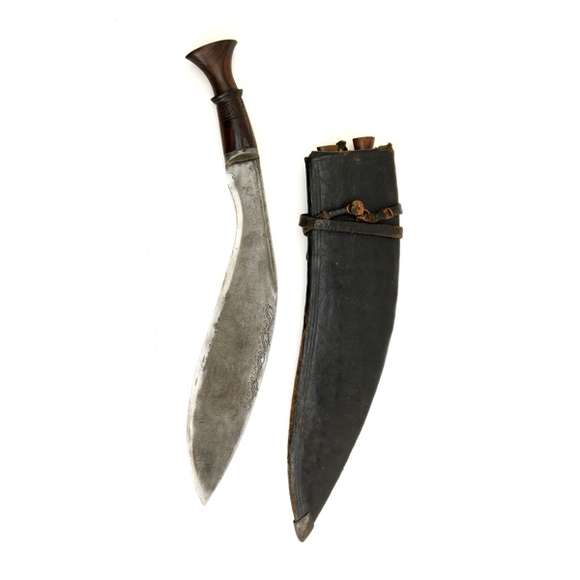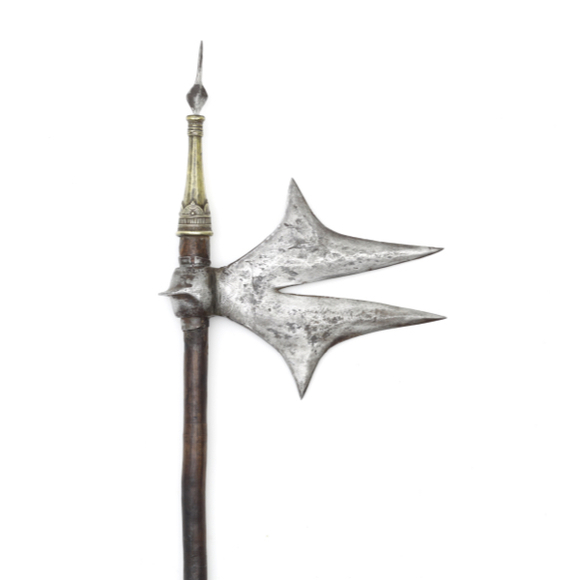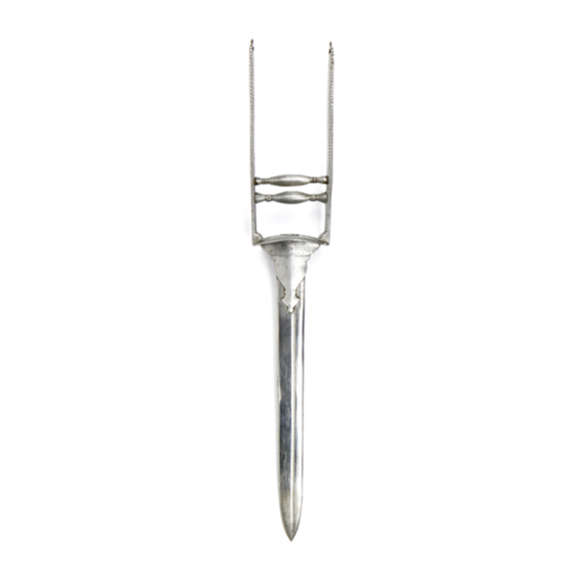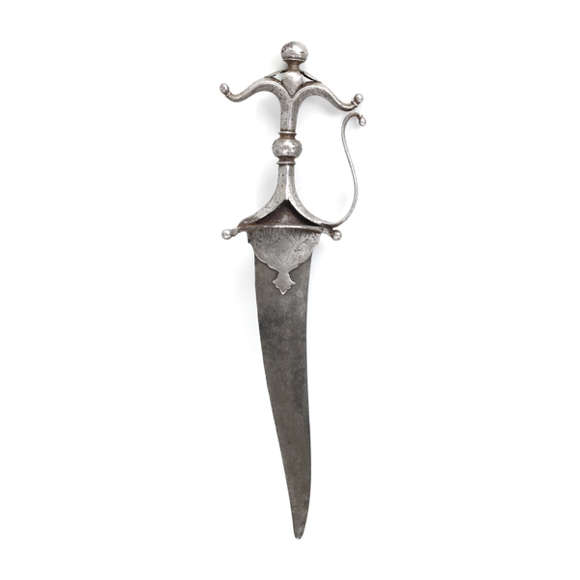Signed: Ricky Milnes, India 44, Burma 44, Ramree 45.
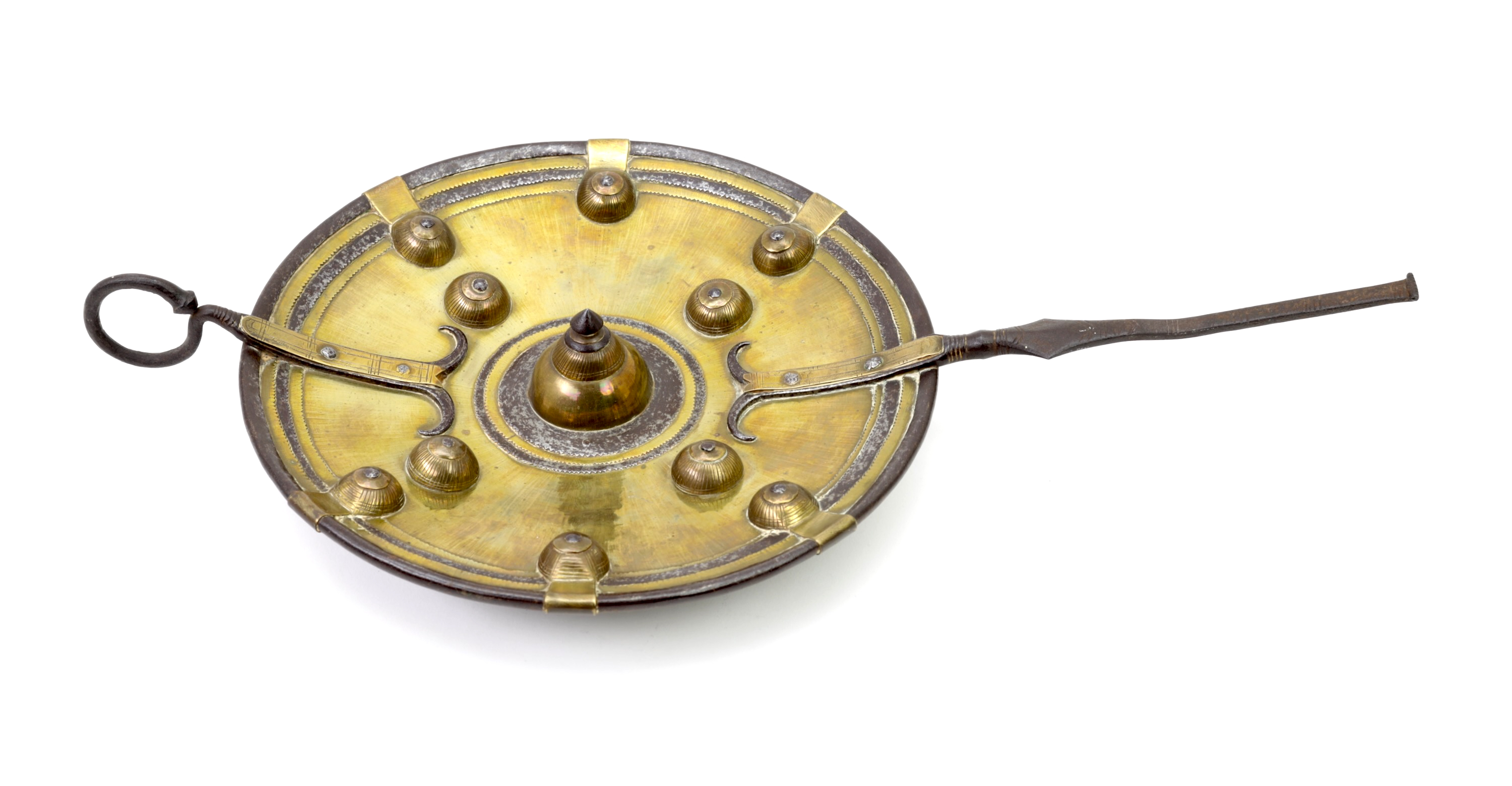
50 cm
27 cm
827 grams
Iron, brass
East India, Bengal to Assam
19th century
Introduction
The Santal people inhabit mostly Jharkhand, West Bengal, and its directly surrounding areas and are linguistically more related to Southeast Asia than they are to India. Their language belongs to the Mon–Khmer group.
They used a peculiar shield of which the dome is used with its concave side to the outside. The shields also have an addition of a ring on top and a protrusion at the bottom, sometimes sharp, sometimes not. It probably suits a very specific fighting style.
A Santali shield in the Illustrated London News of 1853.
A curious mention worthy of further investigation is a passage that is apparently in a "district report from the Sonthal Parganas" that reads:
"The manufacture of steel also has died out owing to the disuse of weapons among the Sonthals and the introduction of imported steel. The famous Sonthali bullet-proof shields can no longer be manufactured."
-Quoted from E.R. Watson
A monograph on iron and steel work in the province of Bengal
Calcutta, 1907, page 25
Further, in the same work, Watson writes:
"It is not, however, so many years since steel or iron circular shields were made in the Sonthal Parganas and in Chota Nagpur."
One is illustrated in the book, held upside down:
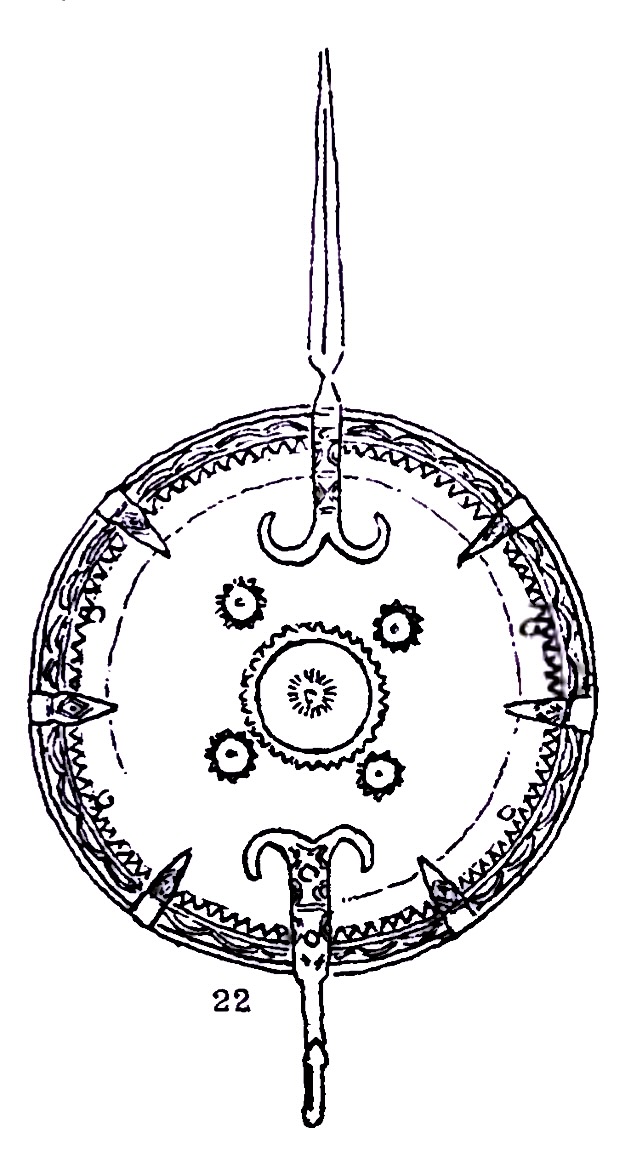
This example
Shield made of brass, polished to a high gloss on the front. It has ten smaller domes and one large, spiked some in the center. On top and bottom are fastened by riveting the customary spike and ring. Four loopholes at the back used to hold the handle straps, now gone.
A very nice example, in good condition.
Comparable examples
The oldest such shield I have been able to find is in the Victoria & Albert Museum, number 453-1875. It came from the collection of William Tayler, a servant of the East India Company from 1829 to 1859. His extensive collection was purchased by the South Kensington Museum in 1874 and 1875. This shield is entirely of iron, save for four copper washers.
Lord Egerton of Tatton writes about a shield he obtained in 1873:
"210. Shield; rudely fashioned of wood, ornamented with four iron bosses surrounding a central one of wood ; iron mounts ; spear point at the top, with a hook at the bottom. Garo Hills, Assam.
Diam. 14 in.; Spear point, 11 in.
(9148.-’73.)"
This shield is now in the Victoria & Albert museum under number
And finally, the one that resembles ours the most is another brass one, in the Horniman Collection, London, number HMOS89. Dated to the 19th century by the museum, no provenance published.
Notes
1. Lord Egerton of Tatton; A description of Indian and oriental armour. London, W.H. Allen & Co.,1896. Page 91.


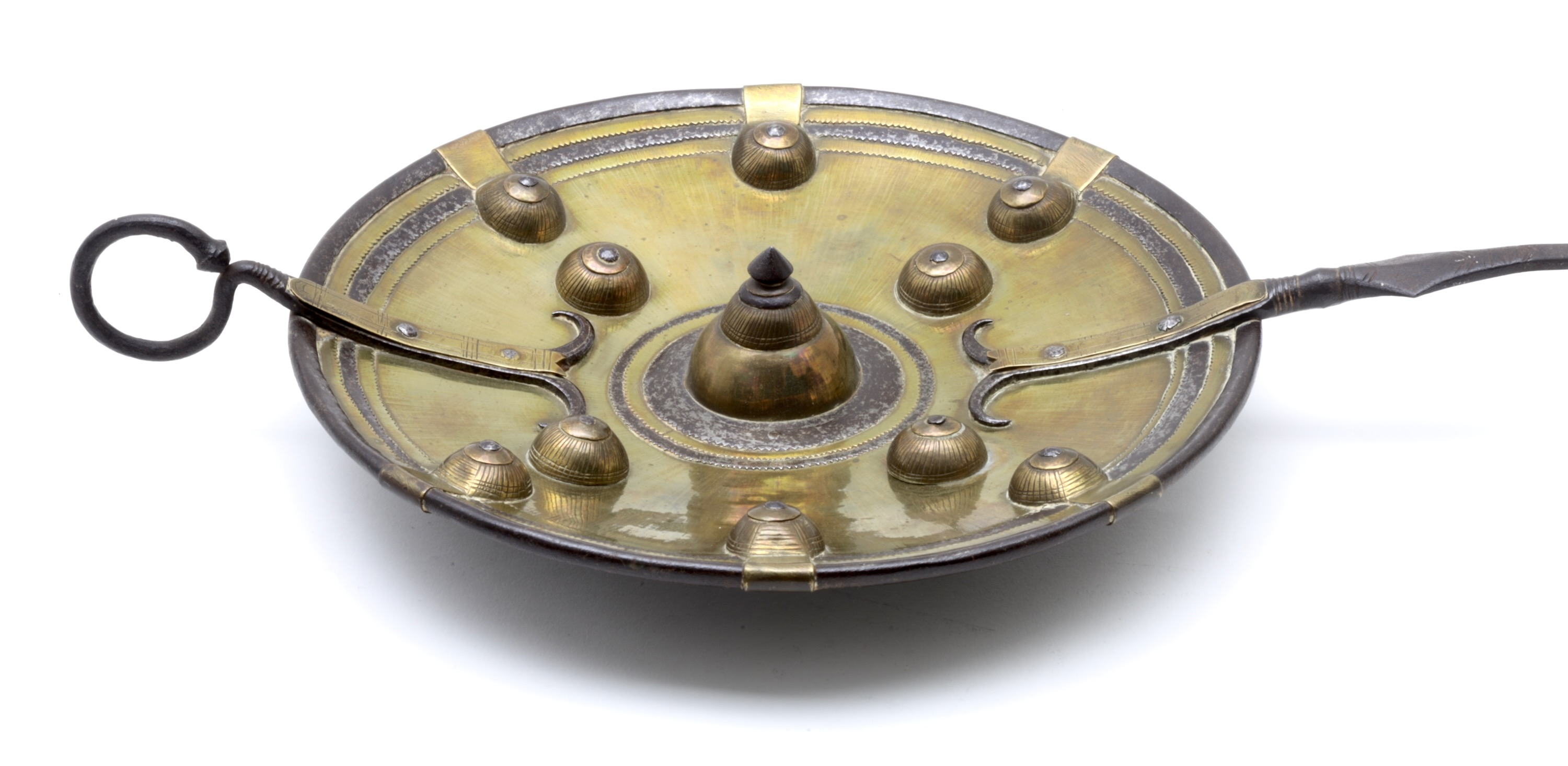

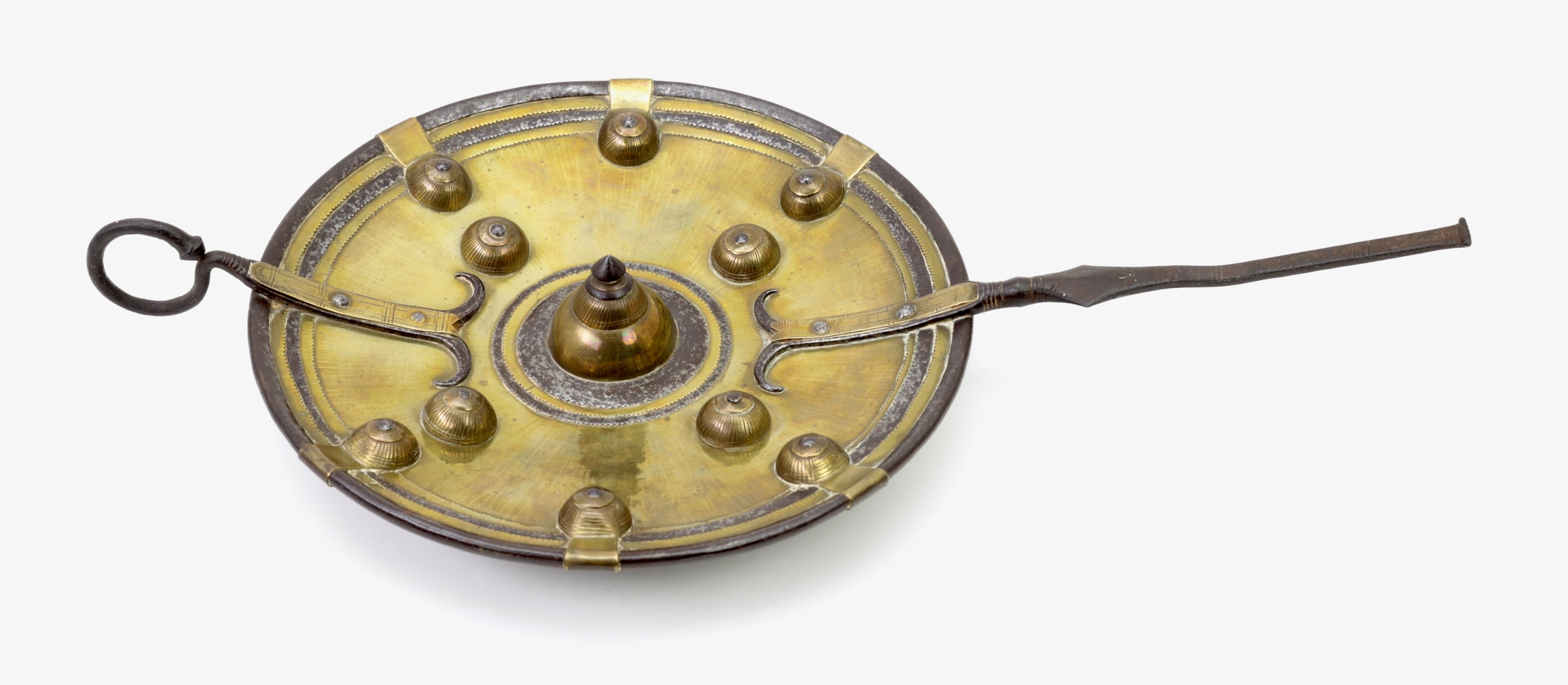
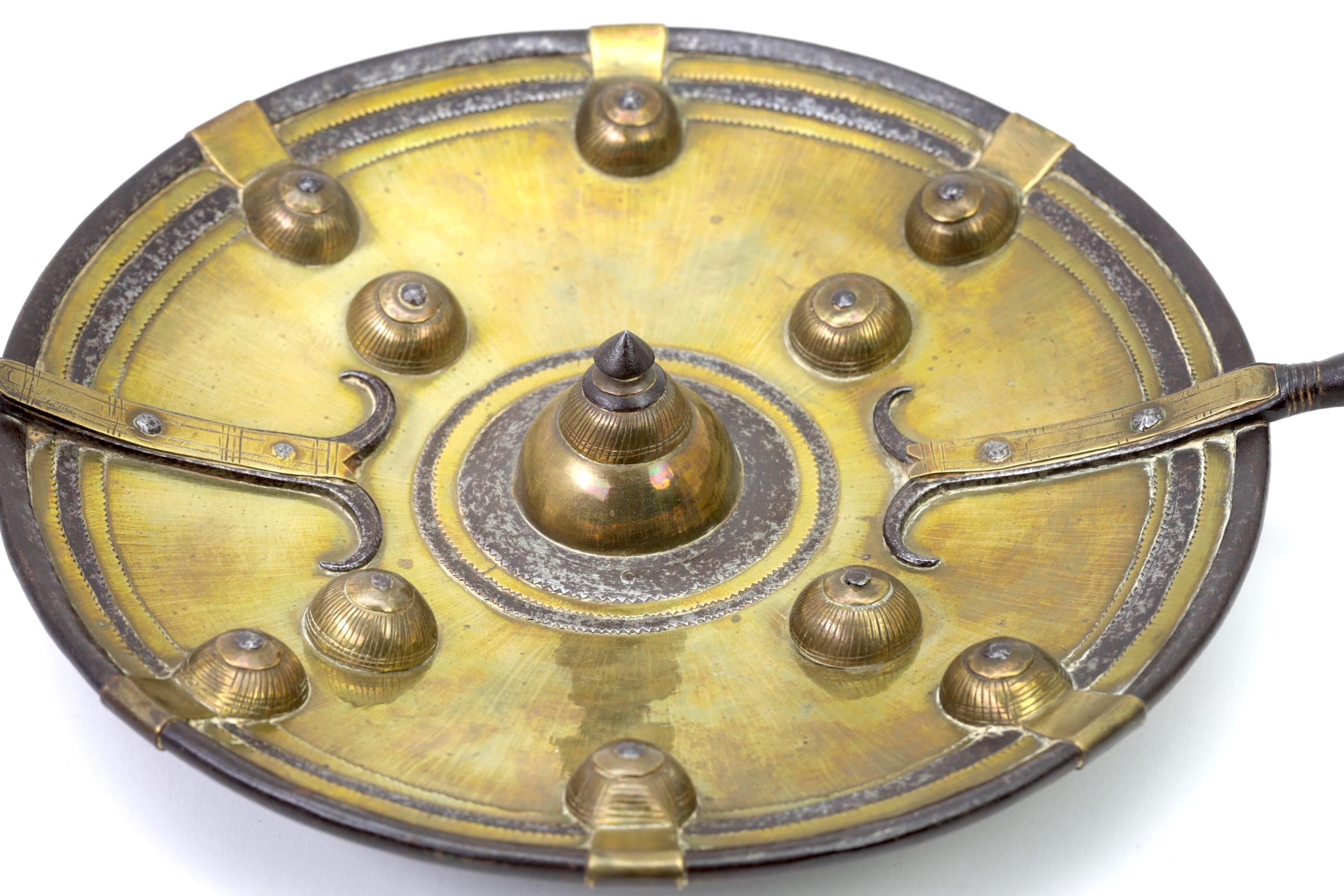

This peculiar sword was used by the Garo people of Assam for fighting, clearing the jungle, and animal…
An interesting South Indian style katar with an imported European blade.
The basket hilt is elaborately overlaid with silver in floral designs.
Somewhat worn but once very high-quality, with great sculptural qualities and remains of silver "true…


